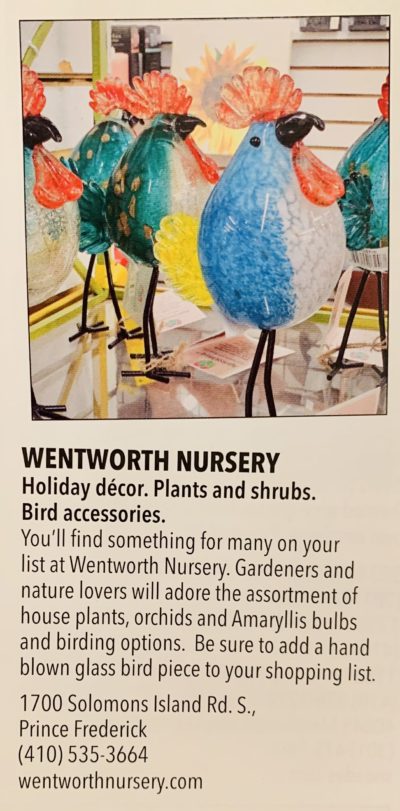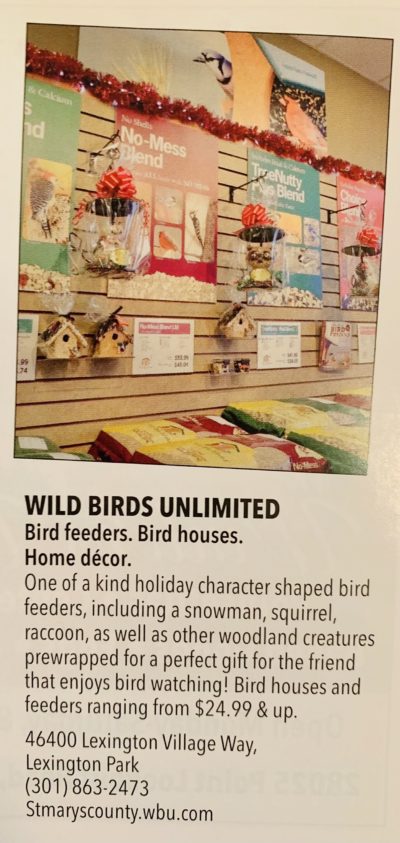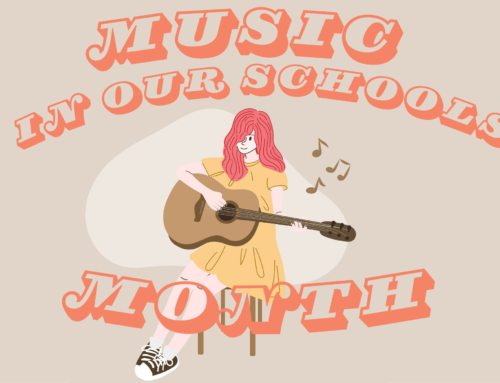
February is National Bird Feeding Month, and this handmade bird feeder is a great craft for all ages. Create this simple and easy pine cone bird feeder as a perfect winter activity to connect with nature and find some new feathered friends. It’s so much fun to watch the birds it attracts to the backyard!
Peanut butter is a good high-protein food for birds, and they can eat any of the same types humans do (they would really enjoy the bits of peanuts found in chunky peanut butter). You can also smear peanut butter on tree bark for a quick winter treat for your backyard birds, as well as your neighborhood squirrels.

Supplies
Here’s a list of what you’ll need. The affiliate links below will take you to products online that are similar to the supplies I used to make this craft.

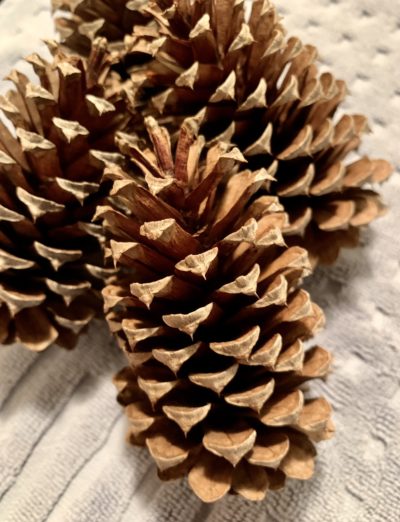

Directions
Cut out a piece of twine or string about 10 inches long and tie it to the top of your pine cone. You may tie a slip knot and tighten it around the top of the pine cone. Then tie the ends of the twine together to make a loop from which to hang the pine cone.
I used floral wire on my pine cones to better secure them to wherever I am hanging them, as past experience has taught me that the hungry squirrels in my yard tend to run off with the string-hung pine cones.
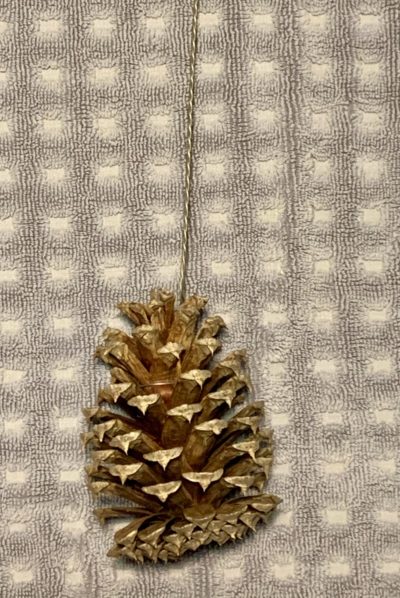
Be sure and attach the string or floral wire to the pine cone before you add the peanut butter and birdseed, as it gets really messy otherwise. Even so, I wore a pair of disposable gloves to make cleanup easier. Next, pour the birdseed into your pie plate or tray.
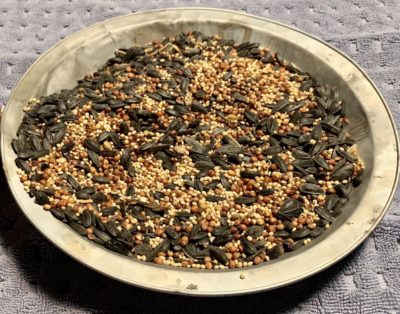
Use the popsicle stick or knife to spread the peanut butter onto the pine cone, although you may find that using your fingers is easiest. I ended up using my fingers to spread the peanut butter (if you do use your fingers, I suggest spreading the peanut butter in a downward motion with the scales, to avoid getting pinched or stuck).
If you prefer to see some of the features of the pine cone, just dab smaller amounts of peanut butter on each scale and poke it into the pine cone, before putting it into the pie plate or tray and rolling it in the birdseed.
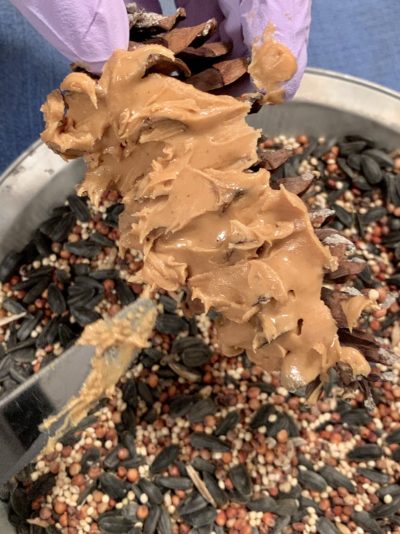
You can add as much or as little peanut butter as you like. If you want your bird feeder to last longer, slather your pine cone with extra peanut butter (that’s what I did). Remember, the more peanut butter you add, the more birdseed you can stick to your pine cone and the longer your bird feeder will feed the birds!

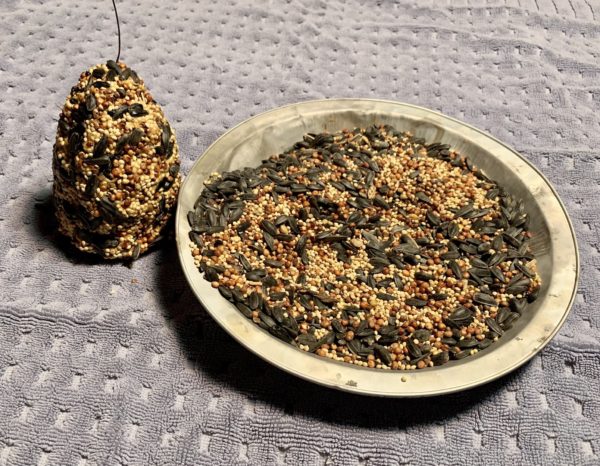
After I covered my pine cones in peanut butter and birdseed, I took them outside and hung them from tall shepherd’s hooks that I have in my front yard and backyard.
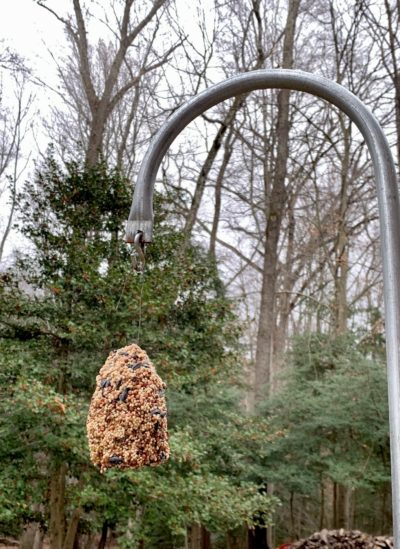
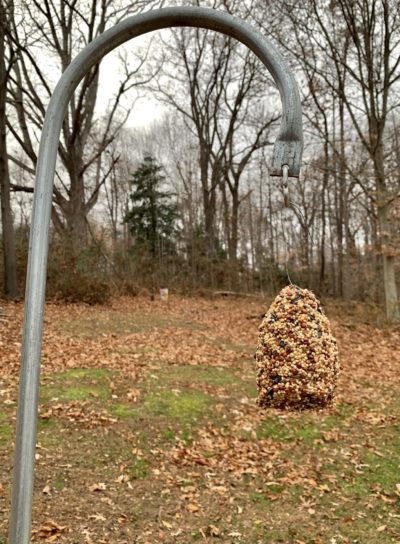
Below are photos from February 2021, showing many different species of birds gathered at one of my backyard feeders.
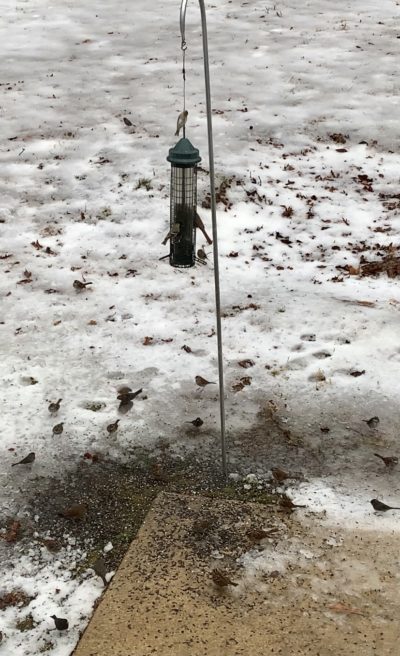
All of the birds searching for food.

A Cardinal and 3 American Goldfinches.
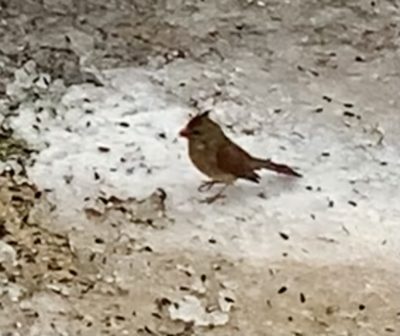
The Cardinal’s mate.

Tufted Titmouse.
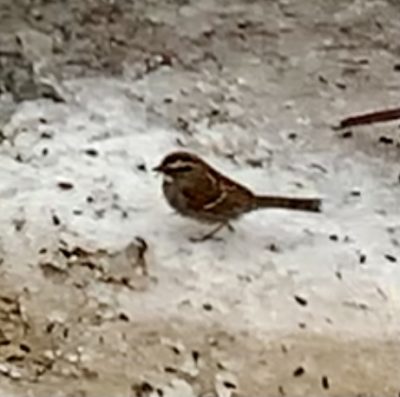
Sparrow.

Dark-Eyed Junco.
Below are local brick and mortar businesses which provide excellent resources for bird feeders, houses and accessories (both images courtesy of “Southern Maryland This is Living” Magazine, Winter 2021 Issue):
- Here is a link to the National Audubon Society Web site, where you can also download the free Audubon Bird Guide app, granting you access to more than 800 North American birds:
- App for iPhone and iPad
- App for Google Play
- Here is a link to the National Audubon Society Bird Guide page, where you can view thousands of birds from different regions, and listen to their beautiful and unique songs.
- For more inspiring crafting ideas, please visit CCPL’s newest free crafting database, Creativebug.
You can also check out our CCPL catalog for more information on various bird species as well as feeding and caring for birds, such as:
- What It’s Like To Be A Bird: From Flying To Nesting, Eating To Singing by David Allen Sibley
- National Audubon Society Birds Of North America: The Complete Guide To Birding – With Full Color Photographs, Updated Range Maps, And Authorative Notes On Voice, Behavior, Habitat, Nesting and Conservation Status by Alfred A. Knopf
- Birds of North America by Francois Vuilleumier
- Bird Families of North America by Pete Dunne and Kevin T. Karlson
- Peterson Field Guide to Birds of Eastern and Central North America by Roger Tory Peterson
- Birding For The Curious: The Easiest Way For Anyone To Explore The Incredible World Of Birds by Nate Swick
- The Backyard Bird Lover’s Ultimate How-To Guide: More Than 200 Easy Ideas and Projects For Attracting and Feeding Your Favorite Birds by Sally Roth
- How To Attract Birds To Your Garden by Dan Rouse
- Secrets of Backyard Bird Feeding Success: Hundreds of Surefire Tips For Attracting And Feeding Your Favorite Birds by Deborah L. Martin with Arlene Koch
- The Backyard Bird Feeder’s Bible: The A-to-Z Guide To Feeders, Seed Mixes, Projects and Treats by Sally Roth
- Birdhouses, Boxes & Feeders For The Backyard Hobbyist: 19 Fun-To-Build Projects For Attracting Birds To Your Backyard by Paul Meisel and Stephen Moss with Alan & Gill Bridgewater
- Bird-By-Bird Gardening: The Ultimate Guide To Bringing In Your Favorite Birds Year After Year by Sally Roth
Image credits: Unless otherwise noted and/or linked, all images were shot during the making of this blog.

